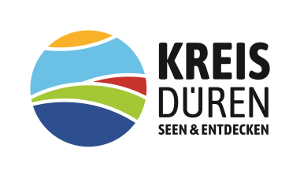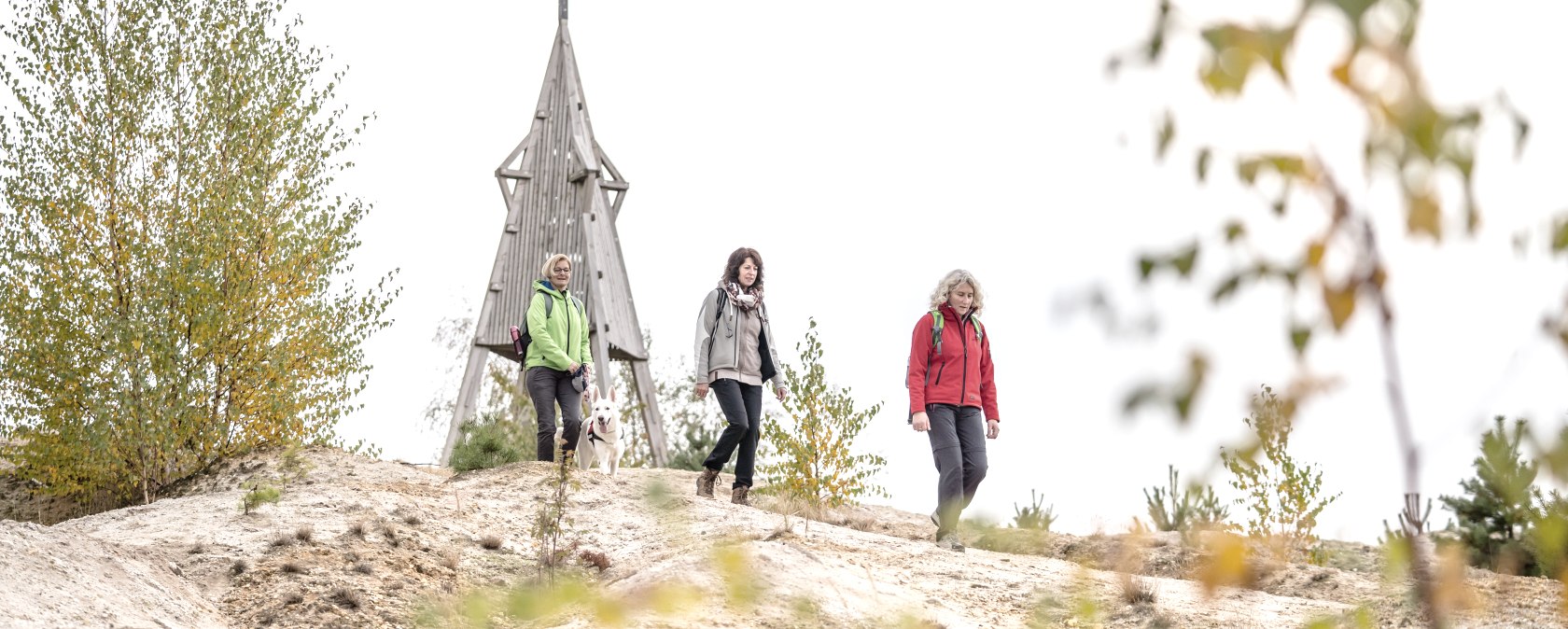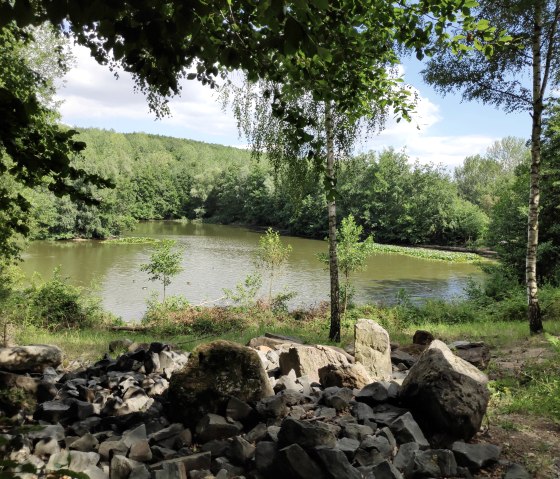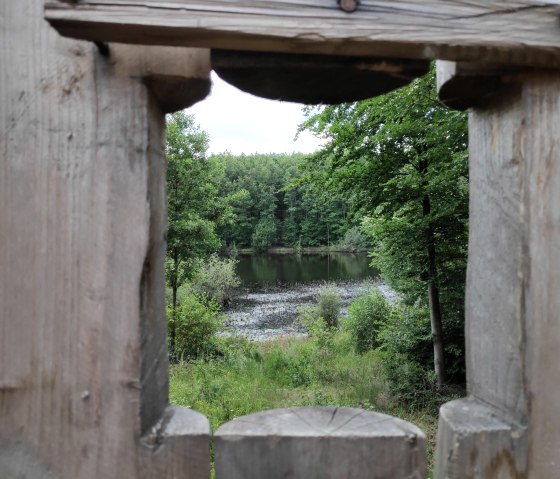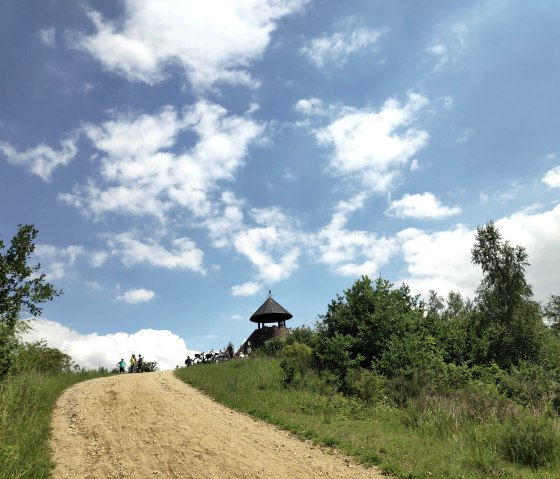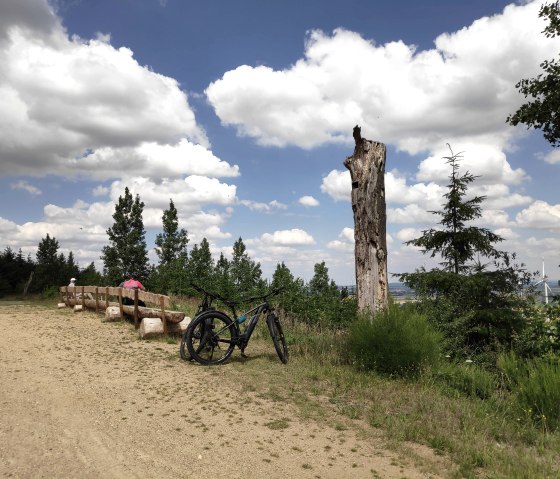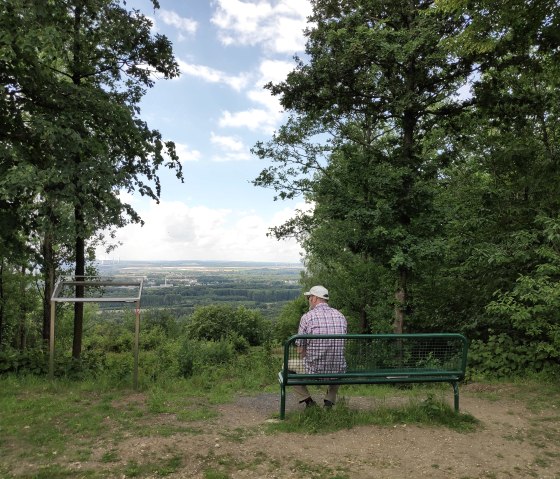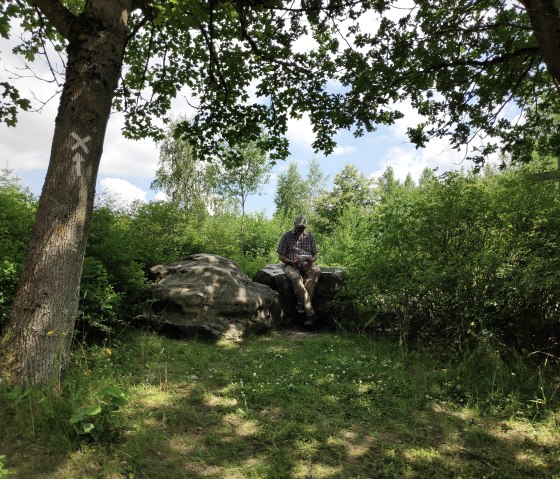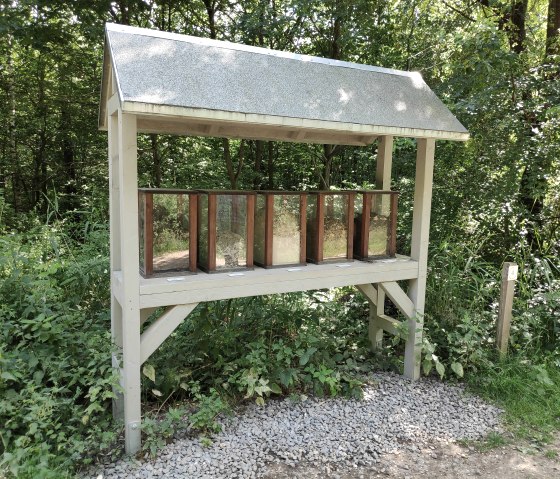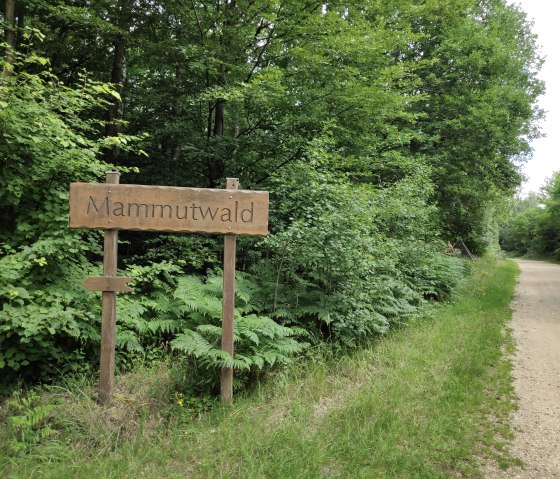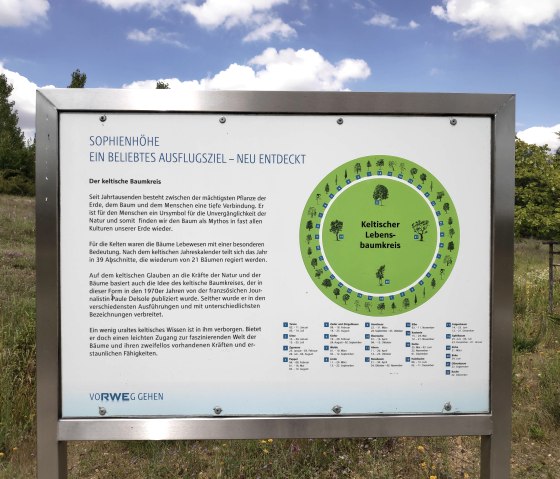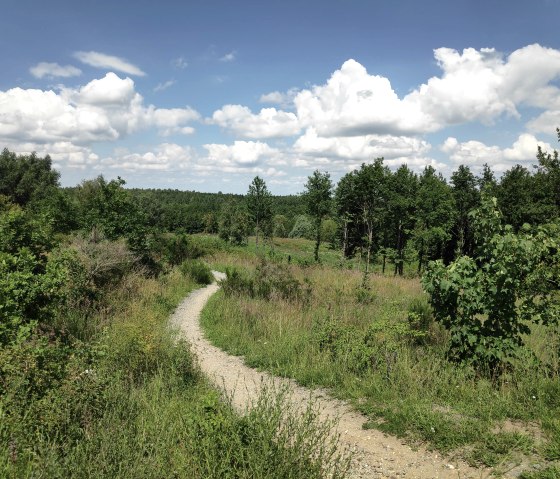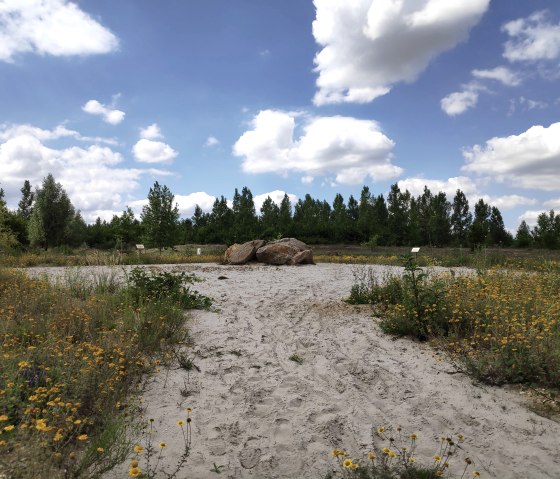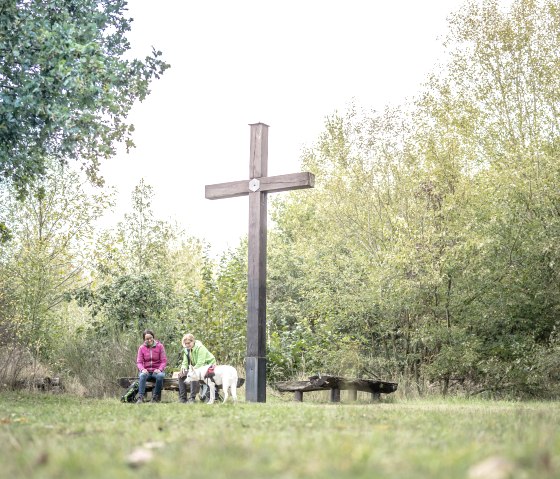indeland: Zu den Highlights auf der Sophienhöhe
Niederzier
The northern region in the district of Düren is a vivid example of the profound landscape and structural change caused by open-cast mining.
The Sophienhöhe was created by open-cast mining. Today, there is a well-developed network of hiking and cycling trails on this former spoil tip, which is ideal for leisurely walks as well as longer and more challenging hiking and cycling tours. On the route to the highlights of the Sophienhöhe are the Roman Tower, the Höller Horn, the Tree of Life Circle, the Weather Radar and the Stone Compass.
Three lakes (Blausteinsee, Dürener Badesee and Badesee Echtz), which are water-filled residual holes from the former open-cast lignite mine and are now ideal for swimming and water sports, are examples of what the open-cast mining landscape can become. After the end of lignite mining in the Inden, Garzweiler and Hambach open-cast mines, an impressive lake landscape with a wide range of leisure activities will be created here in a few years' time.
Directions
Coming from the Sophienhöhe hiking parking lot, we first turn left and then immediately right again and follow the hiking signs A and H. At rescue point 10, we turn right and follow the path and then the signs A and H uphill. At the viewpoint of the Weisweiler power station, we turn left and follow trail sign H to the next junction. Here we leave hiking trail H and follow trail sign A straight ahead. At the "Mammutwald" sign, we can either continue straight ahead or take a short detour into the forest. The path of the redwood forest meets our path again a little further up, at the end of which is the summit cross and a refuge. If you compare the photo of the summit cross from 1981 with the current conditions, you can see impressively how nature has developed.
At the summit cross, we keep left and follow the signs to the Römerturm. At the next crossroads, continue straight ahead and follow the path as it bends to the right. At the next crossroads, turn left, immediately turn right and climb the path uphill to the Roman tower. This lookout tower is modeled on a Roman watchtower and offers a beautiful panoramic view. Signs explain the viewpoints.
We leave the hill with the Roman tower via the path downhill and turn right at the end onto the wide path and keep right again at the T-junction. At rescue point 39, we take a detour up to the Höller Horn, i.e. we turn right (path signs F and D) and after a few steps turn left onto a sandy path that takes us to a sand hill with pioneer plants (Höller Horn).This hill was not recultivated in order to study the natural spread of fauna and flora; instead, only nutrient-poor sand, clayey material and gravel were dumped. The tower, which is adorned with a weather vane bearing the words "Monte Sophia" (as the Sophienhöhe is known), is modeled on an ore mine winding tower from the late Middle Ages.
We leave the Höller Horn the same way we came and return to rescue point 39. Here we turn right and follow the "Krummer Weg" to its end at rescue point 30. Here we turn right and keep right at the next fork in the path. Shortly before we reach the crossroads at rescue point 37, we can catch a glimpse of an enchanted lake through a "peephole". At rescue point 37, continue straight ahead. At the end of the path, we keep left and reach a long bench with a great view towards Elsdorf / Bergheim at rescue point 58. We continue along the upper path, which, after a right-hand bend, takes us steadily uphill to rescue point 55.
Here we turn left and follow the path to the "Celtic Tree of Life Circle", another highlight on our hike. A plaque explains that the Celts regarded trees as living beings with a special significance. The "Celtic Tree of Life Circle" is based on the Celtic annual calendar, which divides the year into 39 sections to which 21 trees are assigned. We leave the "Celtic Tree of Life Circle" in the direction we came from. On the way, we pass the weather radar and shortly afterwards reach the stone compass with a refuge. Minerals extracted during open-cast mining mark the cardinal points of the stone compass. We cross the stone compass and continue straight ahead. We follow the left-hand bend of the path downhill and keep straight ahead at the next crossroads (signpost H). Passing rescue point 6, we reach the Inselsee lake with a rest area that invites us to linger.
We continue along the path and go straight ahead at the next crossroads onto a path that takes us further downhill. At the end of the path (station 5 of the nature discovery trail), we turn right onto the wide path and pass station 4 of the nature discovery trail. At rescue point 4, we continue straight downhill and return to the parking lot and the starting point of our hike.
If you don't want to go home hungry and thirsty after the hike, there are refreshment stops in Hambach (approx. 5 minutes by car or 20 minutes on foot) and Niederzier (approx. 8 minutes by car or 50 minutes on foot), both from the Sophienhöhe parking lot. If you arrive by public transport, we recommend returning directly from Hambach (Schlossstraße bus stop) or Niederzier (Niederzier Mitte bus stop) after stopping for refreshments.
